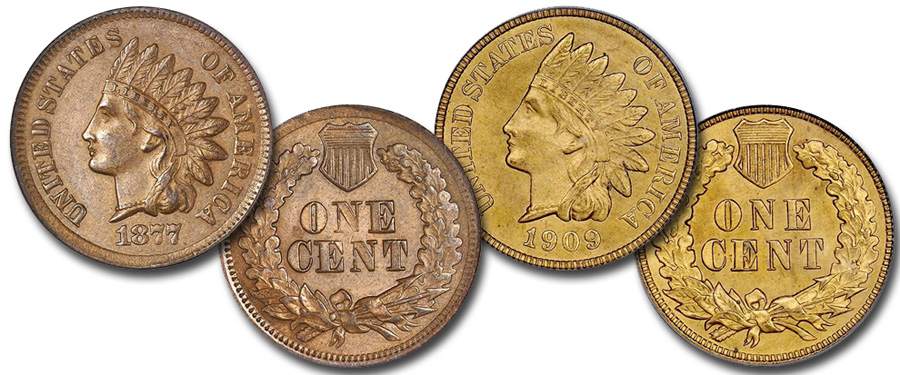
Question: I’m not so sure I get the concept of a key date. For instance, the 1909-S Indian penny has the smallest mintage in the series, but I’m told that the 1877 is the key date to the series. The 1877 has a mintage almost three times as large as the 1909-S. Can you shed some light on this?
Answer: A key date is usually the rarest and most difficult date to obtain in a series, but most U.S. coin series have more than one key date. The Indian cent series is a prime example. As you pointed out, the 1909-S cent has the lowest mintage of the design type – 309,000 pieces – yet it is not considered the primary key date of the series. That honor goes, as you mentioned, to the 1877 despite its larger mintage of 852,500 pieces. At the time the 1877 cents were minted, coin collecting in America was not the everyday pastime it is today. The vast majority of 1877 cents went into circulation and very few examples were intentionally saved. Not so, however, with the lower-mintage 1909-S cent. By 1909 the number of collectors in America was growing steadily, and when word got out of the new Lincoln cent, even the general public was intent on saving the older Indian cents. No doubt many more Mint State 1909-S Indian cents were put aside as the last of their kind than were 1877 cents in any grade. Just keep in mind this little “rule” of numismatics – mintage figures are not always an indication of rarity.





